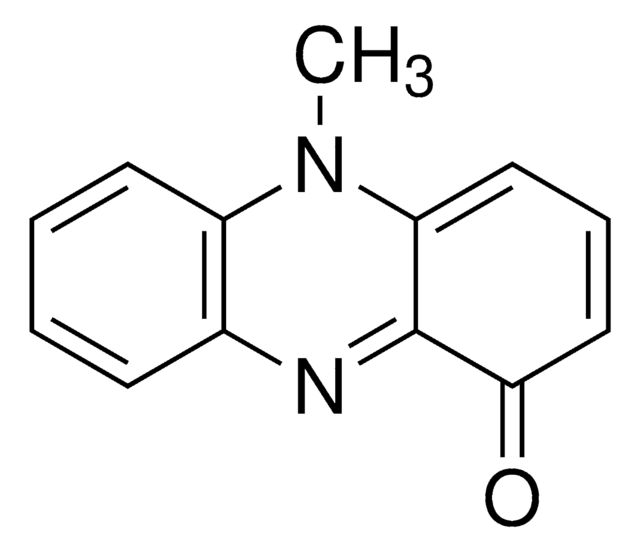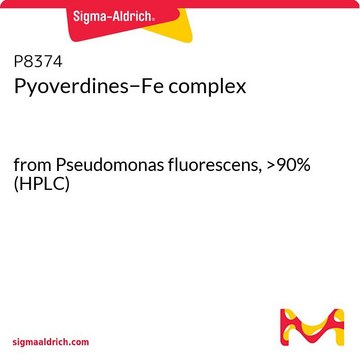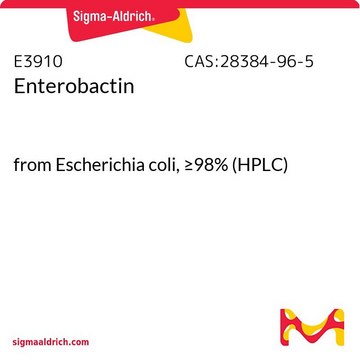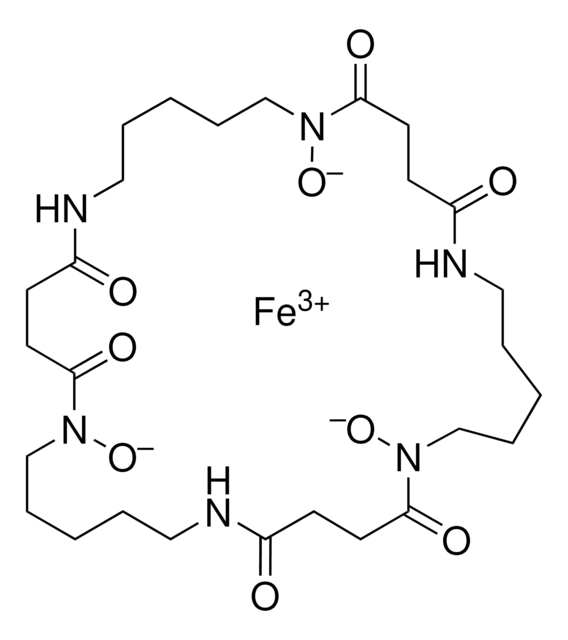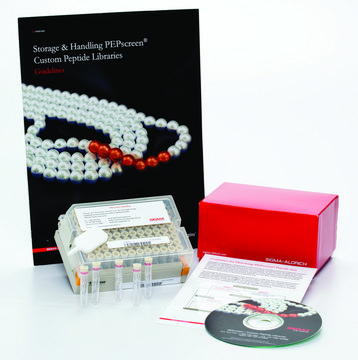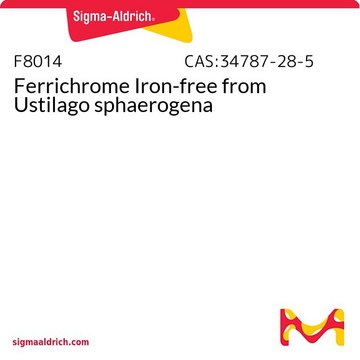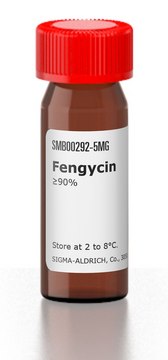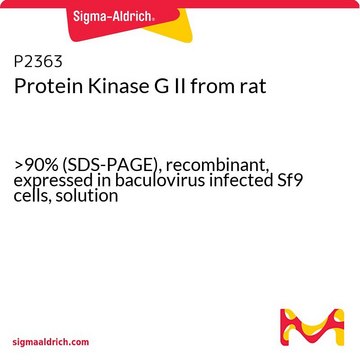P8124
Pyoverdines
from Pseudomonas fluorescens, >90% (HPLC)
Synonym(s):
Pyoverdine Detection, Pyoverdine Protein, Siderophore Protein
Sign Into View Organizational & Contract Pricing
All Photos(1)
About This Item
UNSPSC Code:
12352200
NACRES:
NA.32
Recommended Products
biological source
Pseudomonas fluorescens
Quality Level
Assay
>90% (HPLC)
form
powder
solubility
H2O: ~10 mg/mL
shipped in
wet ice
storage temp.
−20°C
Looking for similar products? Visit Product Comparison Guide
Application
Pyoverdines from Pseudomonas fluorescens has been used :
- in tryptophan fluorescence quenching to determine its binding to neutrophil-gelatinase-associated lipocalin (NGAL)
- to detect pyoverdine diffusion surrounding siderophore-conjugated monobactam (MB-1)-resistant colonies in chelexed, dialyzed Mueller-Hinton broth (CDMHB)
- for synchronous fluorescence spectra of purified pyoverdine
Biochem/physiol Actions
Pyoverdines help in promoting plant growth by chelating iron and rendering it unavailable for plant pathogens. The ferri-pyoverdine complex acts as a signaling molecule inducing the production of secreted virulence factors in Pseudomonas aeruginosa.
Pyoverdines, also called pseuobactins and pyoverdins, are fluorescent siderophores that have high affinity for iron (1032 M-1), and are synthesized by fluorescent pseudomonads under iron-deficient growth conditions. Pyoverdines were shown to prevent iron toxicity produced by iron overload in hepatocyte cultures and effectively scavenges the hydroxyl and peroxyl radicals. Pyoverdines are effective in acquiring iron from transferrin and lactoferrin. Pyoverdines are also involved in the suppression of pythium-induced damping-off of tomato and promotion of growth in some higher plants.
Physical form
Supplied as a mixture containing mainly the succinic acid (MW=1161), 2-hydroxy glutaramide (MW=1190), and succinamide (MW=1160) forms of pyoverdines.
related product
Product No.
Description
Pricing
Storage Class Code
11 - Combustible Solids
WGK
WGK 3
Flash Point(F)
Not applicable
Flash Point(C)
Not applicable
Choose from one of the most recent versions:
Certificates of Analysis (COA)
Lot/Batch Number
Don't see the Right Version?
If you require a particular version, you can look up a specific certificate by the Lot or Batch number.
Already Own This Product?
Find documentation for the products that you have recently purchased in the Document Library.
Adaptation-based resistance to siderophore-conjugated antibacterial agents by Pseudomonas aeruginosa.
Tomaras AP
Antimicrobial Agents and Chemotherapy, 57(9), 4197-4207 (2013)
Antioxidant and free radical scavenging activities of the iron chelators pyoverdin and hydroxypyrid-4-ones in iron-loaded hepatocyte cultures: comparison of their mechanism of protection with that of desferrioxamine.
Morel I
Free Radical Biology & Medicine, 13(5), 499-508 (1992)
Mylene Vaillancourt et al.
PLoS pathogens, 19(4), e1010942-e1010942 (2023-04-08)
During chronic cystic fibrosis (CF) infections, evolved Pseudomonas aeruginosa antibiotic resistance is linked to increased pulmonary exacerbations, decreased lung function, and hospitalizations. However, the virulence mechanisms underlying worse outcomes caused by antibiotic resistant infections are poorly understood. Here, we investigated
Biological activity of secondary metabolites produced by a strain of Pseudomonas fluorescens.
Boruah HP and Kumar BS
Folia Microbiologica, 47(4), 359-363 (2002)
Purification of Pyoverdines of Pseudomonas fluorescens 2-79 by Copper-Chelate Chromatography.
Xiao R and Kisaalita WS
Applied and Environmental Microbiology, 61(11), 3769-3774 (1995)
Our team of scientists has experience in all areas of research including Life Science, Material Science, Chemical Synthesis, Chromatography, Analytical and many others.
Contact Technical Service